Pablo Alvarez
Posts by Pablo Alvarez
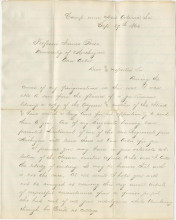
I am frequently asked by students and faculty: where do our rare book collections come from? While we have purchased many extraordinary books since the early years of the University of Michigan, many of our treasures were bequeathed by grateful alums and faculty. The reasons why they donated these artifacts are often fascinating, revealing little-known stories that shed light not only on the history of our institution but on our country at large. The book featured in this post is a rare seventeenth-century edition and Latin translation of the Homer's Iliad...
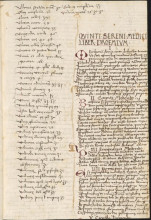
The Liber medicinalis (Book of Medicine) is a medical treatise of around 1,200 dactylic hexameters, traditionally attributed
to the second-century Roman author, Quintus Serenus Sammonicus (d. beginning of 3rd c. AD). It contains sixty-four therapeutic recipes,
divided into two sections: recipes for illnesses affecting individual organs listed from head to toe, and recipes for general ailments like injuries, fevers, fractures and dislocations, insomnia, toothache, and poisoning.
to the second-century Roman author, Quintus Serenus Sammonicus (d. beginning of 3rd c. AD). It contains sixty-four therapeutic recipes,
divided into two sections: recipes for illnesses affecting individual organs listed from head to toe, and recipes for general ailments like injuries, fevers, fractures and dislocations, insomnia, toothache, and poisoning.

Our featured book today is a fourteenth-century Latin manuscript of a medieval bestseller: the Secret of Secrets (Secretum secretorum). Wrongly attributed to Aristotle, and originally composed in Arabic in the eighth century, the content of this work has been gradually shaped, and changed, by scribes and translators throughout the centuries. From being conceived as a manual about kingship, it eventually became one of the most popular medical treatises in the Middle Ages.
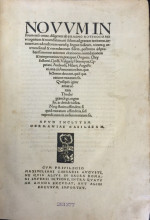
Around 1511, the Dutch Catholic humanist, Erasmus of Rotterdam (1466-1536), began working on an edition and Latin translation of the Greek New Testament, for which he thoroughly compared the text of several Greek manuscripts with Jerome's fourth-century Latin translation of the Bible, the so-called Vulgate.

We are very pleased to announce a new online exhibit from the Special Collections Library: Shakespeare on Page and Stage: A Celebration. It is a virtual record of the physical exhibit that took place in the Audubon Room of the Hatcher Library from January 11 to April 27, 2016. As the title playfully suggests, the exhibit is a historical journey through different versions of Shakespeare’s plays as they were edited for publication or interpreted for the stage.

We are very pleased to announce the opening of a new exhibit at the Special Collections Library. The display showcases recent acquisitions that strengthen our extraordinary holdings in the areas of radical literature, transportation history, film, rare books, culinary history, Islamic manuscripts, children's literature, and Judaica.

A day like today, on April 22 , Miguel de Cervantes Saavedra died in Madrid four hundred years ago. To commemorate this date, I have revisited our collection of early editions of Cervantes's works, selecting for this post the eighteenth-century edition of Don Quixote that played a major role to canonize Cervantes as a global literary figure.
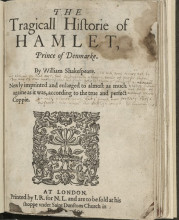
Please join Rebecca Chung (UMSI), Fritz Swanson (Wolverine Press), and Justin Schell (Shapiro Design Lab), for conversation about the Wolverine Press's edition of a famous sheet of paper: the G gathering from the Q2 (second quarto) of Hamlet, which includes Hamlet’s “To be, or not to be” speech, his repudiation of Ophelia with “Get thee a Nunry,” and his speech to the players, “sute the action to the word.”
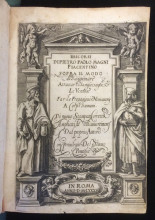
Our featured book is a copy of the second edition of the famous sixteenth-century blood-letting treatise for barber-surgeons, Discourses of Pietro Paolo Magni of Piacenza on how to bleed, attach leeches and cups, perform massages and blistering to the human body (Discorsi di Pietro Paolo Magni piacentino sopra il mondo di sanguinare, attaccar le sanguisugue, & le ventose far le fregagione & vessicatorij a corpi humani). It was published in Rome in 1586.
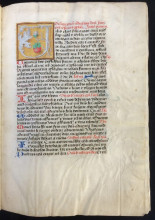
We are very pleased to announce the recent acquisition of an exquisitely illuminated parchment manuscript written in the Southern Netherlands in the sixteenth century. The manuscript is a Lectionary, one of the liturgical books used for the so-called Divine Office of the Church.